-
More to Quick-Opening Closures than Meets the Eye
By Larry D. Payne, Business Development, Pipeline Equipment and Kyle Corriveau, Project Engineer, Pipeline Equipment, Inc., Tulsa OK
The common definition of a closure is a pressure-containing component used to blank off an opening nozzle on a vessel or end of pipeline. Under this definition, a closure could be:
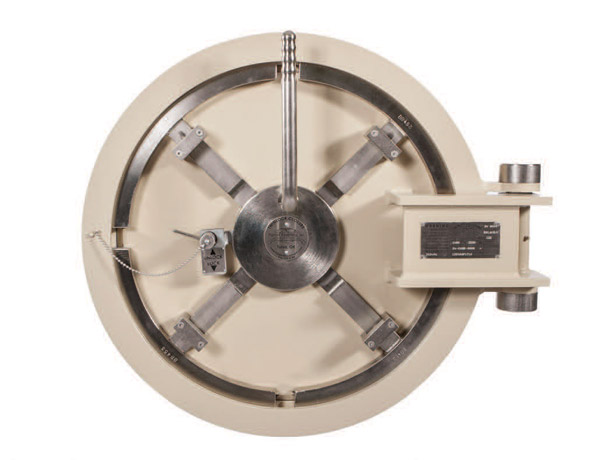
- Weld cap (flat, ellipsoidal, spherical, conical)
- Bolted blind flange
- Quick opening closure
As defined by ASME B31.4 and ASME B31.8 a quick-opening closure is a pressure- containing component used for repeated access to the interior of a piping system.
As defined by ASME VIII-1 UG-35.2 (a) (1): Quick-actuating or quick-opening closures are those that permit substantially faster access to the contents space of a pressure vessel than would be expected with a standard bolted flange connection.
PEI’s expanded definition is “a quick opening closure allows the operator quick, easy, and safe access to the interior of a pressure vessel.”
It is estimated that there are over 250,000 quick-opening closures in service on any given day within the United States. Quick opening closures are primarily installed on pig launchers and receivers, pressure vessels such as filter units, and blowdowns on vertical vent stacks.
Design, Selection
When designing a quick-opening closure, one must follow the appropriate design code for the given application. Pig launcher and receiver closures are normally designed to pipeline design codes ASME B31.4 for liquid pipelines or ASME B31.8 for gas pipelines. Quick-opening closures installed on pressure vessels are normally designed to ASME Section VIII, Division 1.
These codes basically dictate the formula for calculating material thicknesses and allowable material types. The quick-acting design is determined, proven and tested by the supplier. However, certain design safety features are required by code within ASME Section VIII, Division 1, paragraph UG-35b:
- Designed such that a failure of a single locking component will not cause closure to leak or fail under pressure.
- Equipped with a pressure-warning device to alert the operator to the existence of internal pressure.
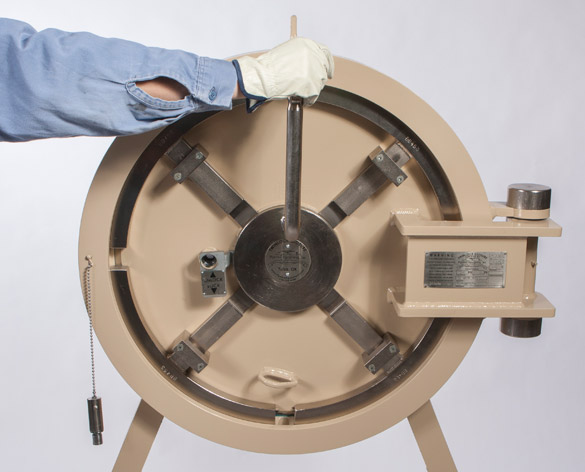 There are 8-10 major closure manufacturers in the United States. Although the design features will vary with each supplier, there are basically three prominent designs commonly used:
There are 8-10 major closure manufacturers in the United States. Although the design features will vary with each supplier, there are basically three prominent designs commonly used:- Threaded type – A two piece closure with door and hub, using an acme-type thread for holding the door to hub, using an O-ring seal.
- Door latch type – A two-piece closure with door and hub, using a latch-type mechanism for latching the door to hub, using an O-Ring seal.
- Clamp ring type – A three-piece closure with door, hub, and clamp ring. The clamp ring is used to holding the door and hub, using an O-Ring seal.
The door latch type and clamp ring type are preferred, particularly in the larger sizes, for ease of operation. Some suppliers also offer a flanged closure that can simply be bolted on to a mating flange installed on the pressure vessel.
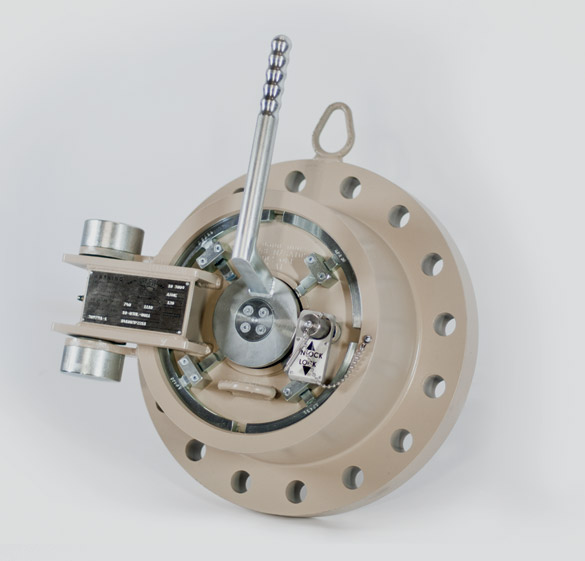 When selecting a quick-opening closure, the supplier needs to know the following information to ensure they supply what you need:
When selecting a quick-opening closure, the supplier needs to know the following information to ensure they supply what you need:- Size (12-inch, 16-inch)
- Pressure rating ( 300#, 600#)
- Maximum allowable operating pressure (MAOP)
- Design code (ASME - 31.3, 31.4, 31.8, Sect VIII)
- Design factor or safety factor (.72, .60, .50, .40)
- Operating temperature (-20 degrees F to -100 degrees F)
- Material type to which it is attached (x42, x60)
- Wall thickness to which it is to be welded (.375, .500)
- Corrosion allowance (.0625, .125)
- Position to which it is to be attached (vertical, horizontal)
- If horizontally installed, which is the preferred side for the hinge arm.
- Bolt-on type
Maintenance
All quick-opening closures need to be properly maintained to extend the service life.
- All painted surfaces should be kept properly painted.
- All non-painted surfaces should be coated with weather protectant.
- All sealing surfaces should be coated with a lubricant such as a light coating of grease.
- If equipped, grease zerks (fittings) on hinge arms, or latch mechanisms should be routinely greased.
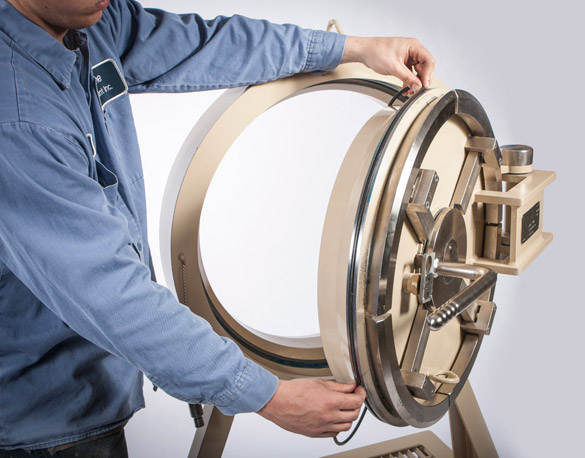 It should be noted that all quick-opening closures normally use O-rings to maintain the pressure seal. It is critical that the O-ring be compatible with product. Buna N, fluorocarbon (Viton), hydrogenated Buna N, are the most common materials used. It is highly recommended that spare O-rings be kept in stock and readily available each time the closure door is opened.
It should be noted that all quick-opening closures normally use O-rings to maintain the pressure seal. It is critical that the O-ring be compatible with product. Buna N, fluorocarbon (Viton), hydrogenated Buna N, are the most common materials used. It is highly recommended that spare O-rings be kept in stock and readily available each time the closure door is opened.Often times when a door is opened, the O-ring has deteriorated or swells when exposed to the atmosphere, which requires immediate replacement. Most quick-opening closures are difficult to open or close and may not be closed if the O-ring swells.
The pressure-warning indicator has a small O-ring that maintains a seal. This O-ring should also be checked routinely and replaced if necessary.
 Some closures are equipped with adjustments on the hinge arm to correct door alignment with the mating hub. Should the door become difficult to open or close, it may require adjustment. This may occur after welding to the vessel, closure disassembly for post weld heat treatment (PWHT), mishandling of the closure or wear over a long period of time.
Some closures are equipped with adjustments on the hinge arm to correct door alignment with the mating hub. Should the door become difficult to open or close, it may require adjustment. This may occur after welding to the vessel, closure disassembly for post weld heat treatment (PWHT), mishandling of the closure or wear over a long period of time.Safety

Of all the features of quick-opening closures, safe to operate should be considered the most important. A closure may be quick and easy to operate but if it is not safe, it should not be considered.
All closures, by code, should be equipped with a pressure-warning indicator, installed in such a manner as to not only give the operator an indication of internal pressure, but to prevent the operator from opening the door-latching mechanism as long as internal pressure exists. The design of the closure should allow the operator to stand to the side, opposite the hinge arm, to prevent a possible accident.
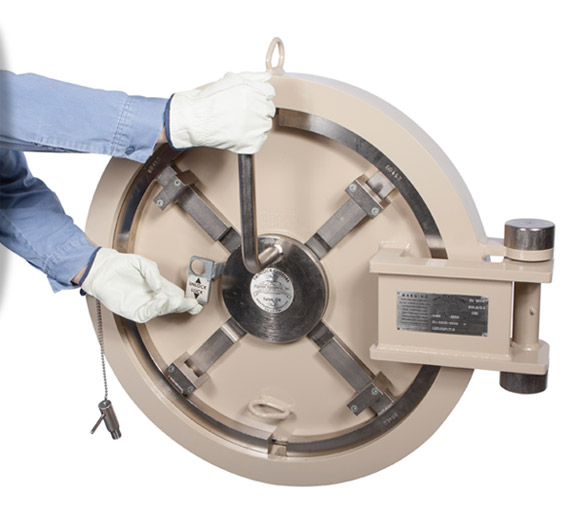 Conclusion
ConclusionQuick-opening closures have been and will continue to be an important part of operating oil and gas pipeline systems. Each provider strives to improve and provide a quality product that is quick, easy and safe to operate. It is the responsibility of the operator to define the application, to maintain and follow the operation instructions to prolong the service life and operate the closure in a safe manner.
Originally published in the Vol. No. 244 - Issue No. 7 of Pipeline & Gas Journal
« Return to News List

